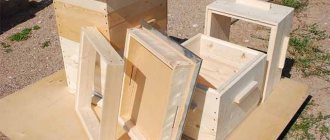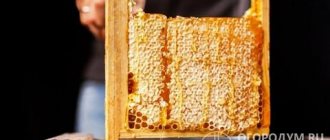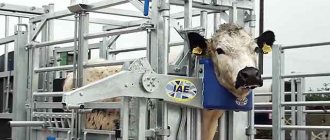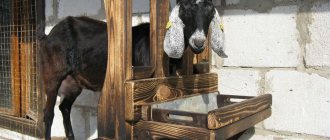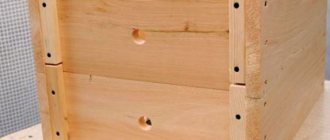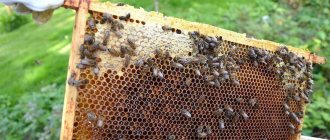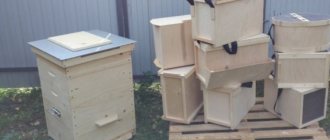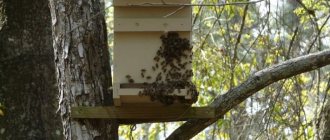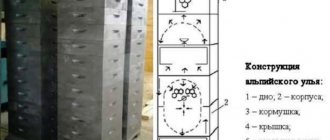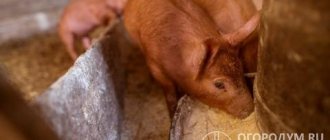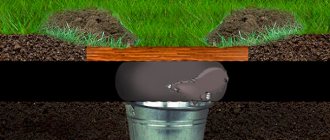Beekeeping is one of the most profitable types of agriculture. The efficiency of honey production largely depends on the design of the hives in specific climatic and weather conditions, which allows optimizing the care of bees: wintering, swarming, maintenance and much more.
The 16 frame hive is one of the most popular types of beehives used in the central climate zone of Russia, so you need to understand how you can build a 16 frame hive yourself.
Advantages
The main advantages of 16 frame hives are simplicity and convenience when inspecting and maintaining the frames; queen cells can be removed without any problems; complete disassembly and printing for pumping out honey are not required; the process of caring for the bee colony is simplified.
Thanks to the internal dimensions and design, the required level of ventilation is ensured, resistance to falls is increased, and there is a sufficiently sized brood nest that does not require expansion. The maximum number of bees is involved in honey production throughout the season.
The housing seriously affects the quality of care for the bee colony, guaranteeing the conditions:
- For breeding the most productive queens;
- For comfortable wintering, protecting the 16 frame hive from dampness and mold;
- To accelerate family growth.
A modernized version of the 16-frame hive is used due to the presence of serious shortcomings of the original model: a vertical wooden partition is placed, dividing it into 2 independent parts: 1 contains 10 frames, and 2 - 2 nesting and 4 with wax sheets.
The advantages of this design of a 16 frame hive are:
- The ability to keep bees in various ways depending on natural factors and family size;
- Availability of free space for overwintering layering;
- Ability to care for and monitor 16 frame parts independently of each other;
- Hassle-free adjustment of nesting frames.
A 16-frame can hold an average of 25-30 kg of honey, bees and collected pollen combined.
Hive Lezhak
The simplest and most common type of hive, usually designed for 24 frames, less often for 16 or another number. A structure such as a beehive does not require complex structures, is easy to maintain, and provides large free space for the successful development of families. It looks like a rectangular case, inside of which there are:
- stationary bottom;
- liner;
- roof;
- frame;
- frames for queens.
A spacious, simple hive that has a beneficial effect on the development of offspring and a solid harvest. Crowded nests oppress families and reduce their productivity. Therefore, many beekeepers prefer to equip their apiaries with beehives.
Varieties
According to many professionals, a 24-frame hive is a comfortable home for the development of families and for maintenance. The appearance of such a hive is a small box with dimensions of 450x390 mm. Inside the hive there is a solid bottom on which two protruding bars are nailed, serving as a support for the landing area. There are other types designed for 16, 20 frames.
There are two folds installed in the upper part of the body. Frames are attached to one. The other is used for installing ceiling planks. There are several dividing boards with which the space is divided into several compartments. The roof is gable and simply fits onto the body. Having a little carpentry experience, making such a hive yourself is not difficult. The presented image makes it possible to understand the structure of the sunbed hive.
Selection of materials
Prepare the necessary materials in advance. For this you will need:
- plywood or pine boards treated with an antiseptic;
- fasteners;
- roulette;
- screwdriver;
- pliers.
Choose well-dried boards without traces of knots for the body. During service they will not be deformed. Some beekeepers use polymer materials, but bees do not always like this.
Advantages
In nature, bees create spacious homes. The collected honey is stored in the upper part of the natural nest, and cells for brood are created below. Just below there are free honeycombs where the bees carry nectar and keep it just in case. When creating hives for apiaries, people have always strived to make them as close as possible to natural nests. Has advantages:
- the ability to contain two families in one hive;
- does not present difficulties in caring for and harvesting;
- a large internal space allows bees to work more productively and actively develop families, create large food reserves for the wintering period;
- the space stimulates the uterus to a high level of egg production;
- serves as a reliable home in adverse weather conditions.
When caring for the hive, the owner needs to promptly replace full frames with empty ones.
Important!
Minimal human intervention in the life of a bee colony has a beneficial effect on their productivity. The hive bed limits the need for beekeepers to penetrate inside.
Disadvantages of a hive bed
Analyzing all the advantages of a beehive, it is worth noting the negative aspects. Disadvantages, albeit minor, exist:
- insufficient air flow;
- large dimensions, requiring a certain space in the winter road;
- the heavy weight of a filled hive, complicating its transportation and movement;
- the need for frequent pumping of honey due to the impossibility of placing more frames.
These minor shortcomings are not even considered by professionals as such, given the high productivity of families in such dwellings. Therefore, they are actively developing the apiary, creating new beehives on their own.
Flaws
The main disadvantages of 16 frame sun loungers are:
- Large size, heavy weight and inconvenient operation;
- Reduced rate of increase in bee strength compared to hives with 12 frames;
- Reducing the volume of honey collection, especially in spring;
- High risk of swarming - separation of the family into parts;
- The complexity of care increases if 2 families are accommodated;
- Impossibility of use in nomadic beekeeping.
Also, bee colonies exclusively develop the first 12 frames, so the level of development of the swarm and the volume of honey collection between 12 frame and 16 frame hives are the same, which increases cost inefficiency.
Finally
Some beekeepers believe that honey collection does not depend on the design of the hive. They are deeply mistaken. According to research results, if you build a hive correctly, the performance of bees increases significantly.
Nowadays, a lounger can be easily purchased both in a store and at any bee exhibition or fair. In addition, it can be made to order by any carpenter or you can simply make it yourself. To do this you will need a drawing, the necessary materials, tools, and a great desire. Try it and you will succeed. In addition, you will not only save your money, but after seeing the result of your work, you will want to make more than one house for striped workers.
Design
To construct a 16-frame hive with your own hands, you need to know the features of the device, dimensions and much more. The 16-frame beehive bed has the following design:
- Frame;
- The bottom, which can be either removable or non-removable;
- Lid;
- A sheet of plywood covering the top surface of the frames;
- Framework;
- If necessary, a vertical partition;
- A partition separating bee colonies;
- Shop;
- Insulating structures to retain heat for successful wintering;
- Boards attached to the exit holes;
- Feeders.
The design is quite simple, so if you have experience, knowledge and suitable tools, you can easily create an apiary from 16 frames.
Manufacturing
Making a hive from 6, 10, 12, 16 or 20 frames with your own hands requires a clear understanding of the design and required dimensions.
Materials and tools
To make 16 frame beehives you will need:
- Soft wood (pine, poplar, linden or aspen) to retain heat in the structure and make it light;
- Ruler;
- Sample;
- Plywood;
- Tools for working with wood;
- Hammer;
- Drill;
- Chisel;
- Glue;
- Fastening consumables;
- Roofing materials;
- Pre-made 16 frames.
It is important to observe the internal dimensions of the body of the hive to ensure proper operation and comfortable living of bee colonies for many years.
Drawings and dimensions
As in the 20-frame hive, the hive-bed consists of a front, back and two side walls, and a non-removable bottom. The front and rear walls must be at least 40 cm wide, and the internal dimensions of the side walls must be 37 mm.
On the front surface there are 2 rectangular cells measuring 8x1.2 cm on top and 25x1.2 cm on the bottom. The bottom of the 16-frame can be made either removable or non-removable.
The magazine is made of boards measuring 40x30 mm, fastened with boards and nails. The frames must have internal dimensions of 450x145 mm, nesting dimensions - 450x300 mm.
Assembly
To assemble 16 frame hives you must follow the following algorithm:
- Cut out the necessary parts from wood according to the drawings using a ruler. It is important to accurately and accurately cut out all the parts for subsequent ease of assembly of the structure.
- Bottom assembly. The bottom will consist of 2 boards, which must be connected around the perimeter using nails.
- Next, the side boards are secured to the base.
- We form the front and back walls, cut out slots to accommodate 16 frames measuring 18x11 mm.
- The roof is being built, the boards are also fastened with nails. On the back of the roof it is necessary to make a hole measuring 200-3 mm for ventilation. A round hole with a diameter of 2.5 cm should be made on the front part. The holes should be closed with a mesh from the inside.
- Attach small legs to the base.
- Dry the wood and paint it to increase its service life.
- On the side walls on the outside you can make handles for convenience.
It is recommended to carry out modification by creating a multi-hull design. To do this, it is necessary to divide the hive bed with a vertical partition so that 10 frames for storing honey are placed in 1 part, and 2 empty and 4 with foundation in the other.
Double wall house
A double-walled or insulated hive with 12 frames is an ideal choice for the northern and central regions of our country.
This design is assembled using frame technology. A suitable natural insulation material is poured between the walls of the housings, for example, dry sawdust, moss or chopped straw mixed with pine needles.
Usually, for convenience, beekeepers make the floor solid. The detachable option involves installing plugs made of bars in the lower part of the frame, which do not allow the insulation to spill out when the bottom is removed.
The height of the lower entrance gap of 20 mm is ensured by the height of the slats installed on the floor panel. The upper tap hole is made in exactly the same place as in single-wall structures.
The roof is gable, equipped with ventilation holes along the gables.
Additional insulation is provided by:
- due to the outer walls - they are 1.2-1.5 cm higher than the inner ones (an insulating mattress is spread into the side obtained in this way);
- due to the greater thickness of the internal walls, which avoids the insulation getting wet due to the formation of condensation in it.
Let us once again clarify the dimensions and drawings of the honeycomb frames. For a nest they look like this:
And for the store they are made smaller in height:
Content Tips
Typically, 16-frame dadan hives are used to care for 1 bee colony, the care process is simple compared to other types. There is no need to replant bees after wintering, as there are no problems with fluid accumulation and mold growth.
After the first spring flight of bees, the entire apiary of 16-frame Dadan hives should be inspected for the condition of the swarm in order to remove dead individuals.
It is important to check the amount of food reserves remaining after wintering. If they are absent, honeycombs and bee bread should be placed; Remove empty and unused frames. Afterwards, do not disturb the insects for 2-3 weeks.
After the beginning of the flowering season, it is necessary to place 4 frames with a gradual increase in their number in proportion to the strength of the family. When all the frames are filled out, proceed to the division of the family.
How to Keep Bees in a 16 Frame Hive
Compared to other hive designs, keeping bees in a 16-frame wooden house is easy. In winter, the bees will not need to be replanted, since the house will not become damp. Beekeeping involves inspecting the inside of hives and assessing the condition of bee colonies. Also, during the inspection, debris is removed from the subframe space.
After wintering, the beekeeper checks the supply of fertilizer. If it is completely eaten, comb honey and beebread are added to the hives. Empty and dirty frames must be removed. The house should only have those frames that are occupied by insects at a particular moment.
During the flowering period of plants and honey flowers, 4–6 frames are added to the hive, installing them as close as possible to the brood frame. As bee colonies increase, the beekeeper should begin to form layers, separating the bees for half the summer. To prevent the swarming process, it is necessary to remove immature queen cells. Mature ones leave.
A hive with 16 honey frames is an ideal solution for comfortable living of honey bees, regardless of the time of year and climatic conditions.
If you do not follow this recommendation, swarming cannot be avoided; you will only slightly delay its onset. Selection and pumping out of sweet nectar begins after sealing the wax cells in store extensions.
In forest areas, honey during wintering is partially replaced by sugar bait in the form of syrup. In the steppe - they leave frames with honeycombs.
By adhering to clear instructions and strictly observing measurements, you can independently make a 16-frame dadan hive, which will not only be a source of pride, made with your own hands in a short time, but also an excellent home for bees to live comfortably at any time of the year.
